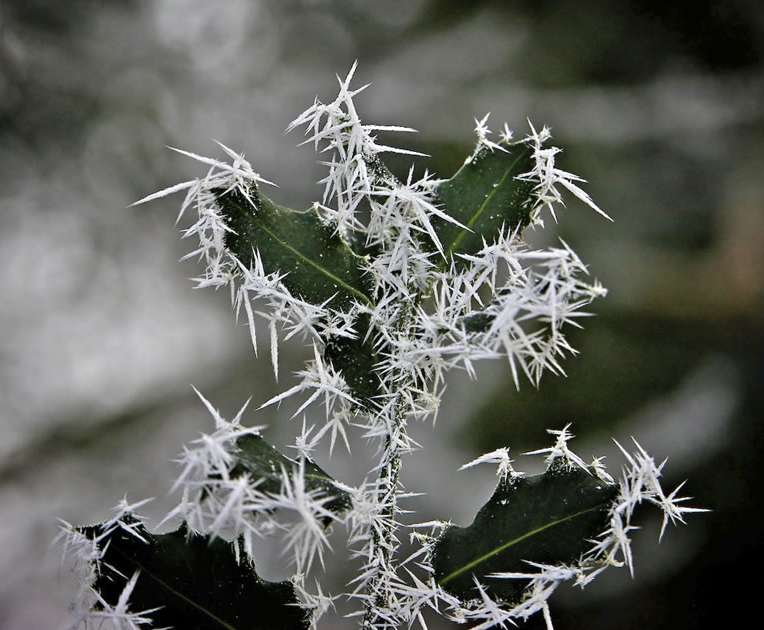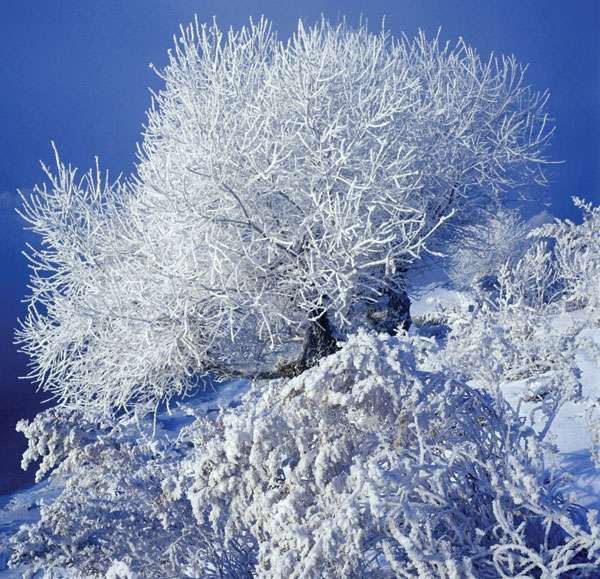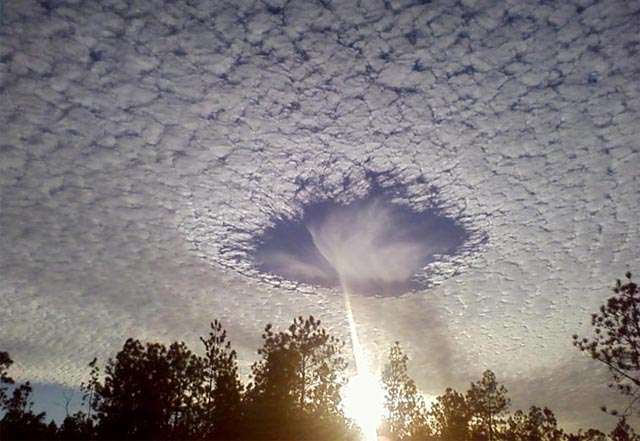It looks like you're using an Ad Blocker.
Please white-list or disable AboveTopSecret.com in your ad-blocking tool.
Thank you.
Some features of ATS will be disabled while you continue to use an ad-blocker.
2
share:
Some of you already tried this fun experiment with instantly frozen water bottles:
It's the same kind of phenomenon that produce this beautiful crystallization:
Source
This can be found also in nature:
1- Holly Rime

Source: APOD
Original source: fotoJesper.dk
2- Natural supercooling

Source: Nature
3- Hole-punch clouds

Source: cosmos magazine
It's the same kind of phenomenon that produce this beautiful crystallization:
Supercooling, also known as under-cooling, is the process of lowering the temperature of a liquid or a gas below its freezing point without it becoming a solid.
A liquid below its standard freezing point will crystallize in the presence of a seed crystal or nucleus around which a crystal structure can form. However, lacking any such nucleus, the liquid phase can be maintained all the way down to the temperature at which crystal homogeneous nucleation occurs. Homogeneous nucleation can occur above the glass transition temperature, but if homogeneous nucleation has not occurred above that temperature an amorphous (non-crystalline) solid will form.
Source
This can be found also in nature:
1- Holly Rime

The frosty spikes are rime.
When the air temperature is below freezing, suspended fog or mist droplets do not necessarily freeze. They can remain as supercooled liquid at quite low temperatures for lack of nuclei to initiate crystallization.
All that changes when they hit a suitable surface - here the points on a holly leaf. They freeze and the ice surface then provides a center for further droplet crystallization to give these unusual formations.
Source: APOD
Original source: fotoJesper.dk
2- Natural supercooling

These trees are covered in rime ice, which forms when supercooled water droplets in the atmosphere come into contact with cold objects and freeze rapidly.
Source: Nature
3- Hole-punch clouds

Aeroplanes passing through the atmosphere are creating holes in the clouds which can cause disruptive weather, say researchers.
In a study published in the current issue of Science, researchers explain how cloud holes are created when part of the cloud freezes and falls to the ground as snow - a process that can be triggered by an aircraft.
There are two key ingredients required for the creation of a holey cloud: supercooled water and a sudden temperature drop.
Supercooled water seems to defy the laws of physics by remaining liquid at sub-zero temperatures. This phenomenon occurs in clouds at temperatures between 0 and -40°C when there are no ice nuclei (e.g. dust particles) present to allow the water droplets to crystallise.
However, a sudden drop in cloud temperature may help to initiate ice crystal formation. An aircraft can provide this cooling via an expansion of air behind the propeller tips or by airflow over the wings.
The introduction of ice into a supercooled cloud triggers a domino effect of rapid ice formation. When the ice becomes too heavy to remain in the cloud, it falls to the ground as snow, leaving behind a void.
The method by which ice crystals grow in a supercooled cloud is known as the Bergeron-Findeisen (B-F) process, in which water droplets evaporate, condense and freeze onto the ice crystals, leading to further crystal growth
Source: cosmos magazine
edit on 12-5-2012 by
elevenaugust because: (no reason given)
reply to post by elevenaugust
the first video won't play for me. it says something about music copyright.
the first video won't play for me. it says something about music copyright.
new topics
-
A Warning to America: 25 Ways the US is Being Destroyed
New World Order: 1 hours ago -
America's Greatest Ally
General Chit Chat: 2 hours ago -
President BIDEN's FBI Raided Donald Trump's Florida Home for OBAMA-NORTH KOREA Documents.
Political Conspiracies: 7 hours ago -
Maestro Benedetto
Literature: 8 hours ago -
Is AI Better Than the Hollywood Elite?
Movies: 8 hours ago
2
